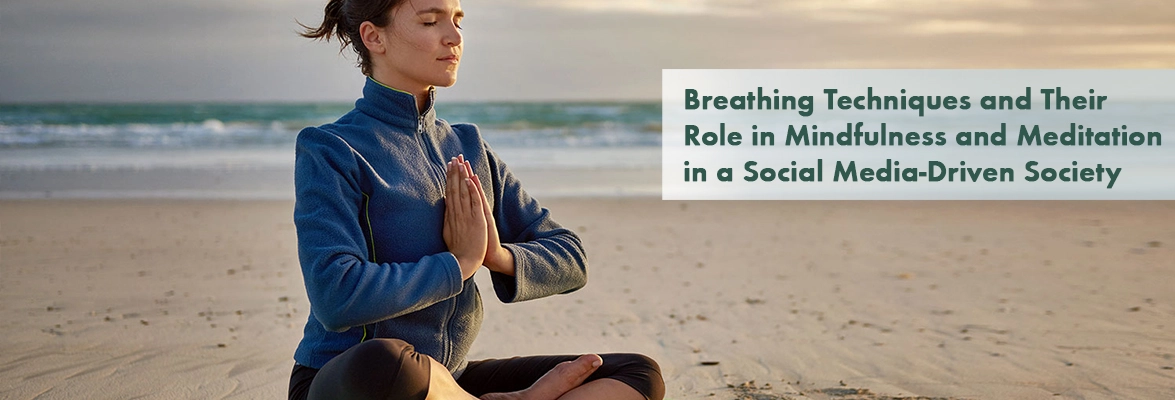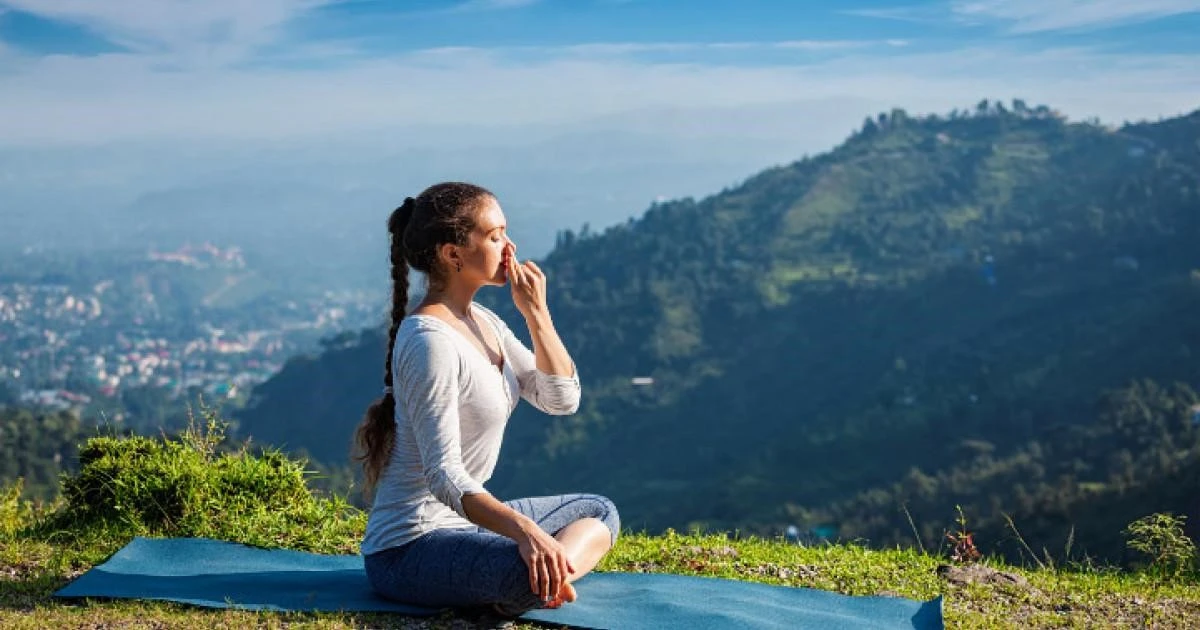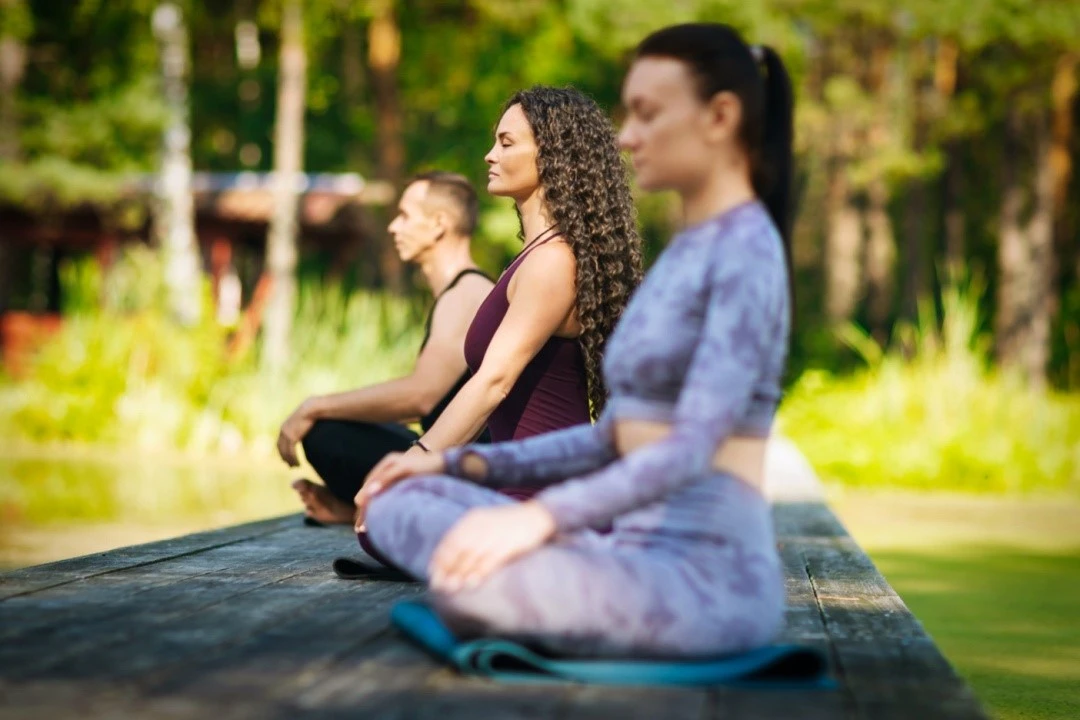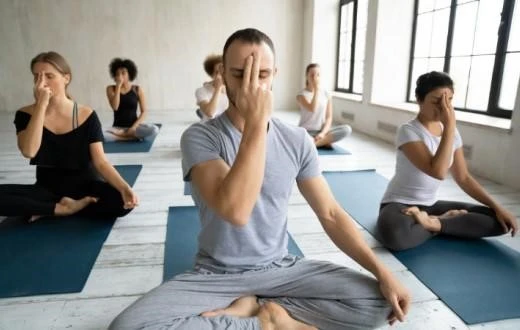
Breathing Techniques and Their Role in Mindfulness and Meditation in a Social Media-Driven Society
In today’s fast-paced, digitally connected world, the pursuit of mindfulness and inner peace has become more crucial than ever. Social media, while offering a platform for connection and expression, often exacerbates stress, anxiety, and feelings of inadequacy. This constant barrage of external stimuli can lead to a fragmented sense of self and a pervasive sense of unrest. In this context, traditional practices such as mindful breathing and meditation have gained renewed relevance. Breathing techniques, in particular, offer accessible and powerful tools for cultivating mindfulness, fostering self-love, and achieving inner peace. We will be exploring various breathing techniques and their contributions to mindfulness and meditation, especially in a society increasingly dominated by social media.

The Power of Breath: A Bridge to the Present Moment
Breathing is a fundamental, yet often overlooked, physiological process. It is unique in that it occurs automatically, governed by the autonomic nervous system, but can also be consciously controlled. This dual nature makes breath a powerful anchor for mindfulness and meditation practices. By focusing on the breath, individuals can bring their attention back to the present moment, quieting the mind and reducing the impact of external distractions.

In a social media-driven society, where attention is constantly pulled in multiple directions, the ability to return to the present moment is invaluable. Mindful breathing serves as a counterbalance to the rapid pace of modern life, offering a simple yet profound method for grounding oneself amidst the chaos.
Different Breathing Techniques and Their Benefits
Several breathing techniques have been developed and refined over centuries, each offering unique benefits for mindfulness and meditation. Below are some of the most effective techniques:
1) Diaphragmatic Breathing (Abdominal Breathing)
Diaphragmatic breathing, also known as abdominal or deep breathing, involves consciously engaging the diaphragm to fully expand the lungs, allowing for deep, slow breaths. This technique often reduces stress and anxiety, as it activates the parasympathetic nervous system, promoting relaxation and calm.
In a society where stress is often exacerbated by social media comparisons and the pressure to maintain a certain image, diaphragmatic breathing can serve as a powerful tool for cultivating inner peace and self-compassion. By slowing down the breathing, individuals can create a sense of spaciousness in their minds, making it easier to respond to challenges with equanimity rather than reactivity.
2) Box Breathing (Square Breathing)
Box breathing is a simple yet effective technique that involves inhaling, holding the breath, exhaling, and holding the breath again, each for an equal count (typically four seconds). This method is particularly useful for enhancing focus and mental clarity, making it a favorite among athletes, military personnel, and those in high-stress professions.
In the context of social media, where constant scrolling and notifications can lead to a fragmented attention span, box breathing helps individuals regain control over their focus and cultivate a sense of inner stability. The rhythmic nature of box breathing can also help quiet the mind, making it easier to engage in deeper meditation practices.
3) Alternate Nostril Breathing (Nadi Shodhana)
Alternate nostril breathing, or Nadi Shodhana, is a technique rooted in ancient yogic practices. It involves closing one nostril and inhaling through the other, switching nostrils for exhaling, and repeating the process. This technique is believed to balance the left and right hemispheres of the brain, promoting mental and emotional equilibrium.
In a world where social media often amplifies polarized thinking and emotional extremes, alternate nostril breathing can help restore balance and calm. This practice not only supports mindfulness but also enhances self-awareness, making it easier to navigate the complexities of modern life with a centered and balanced mind.
4) 4-7-8 Breathing
The 4-7-8 breathing technique, popularized by Dr. Andrew Weil, involves inhaling for a count of four, holding the breath for seven counts, and exhaling for eight counts. This method is particularly effective for inducing relaxation and preparing the body for sleep.
In a society where the constant stimulation from screens can interfere with sleep patterns and overall well-being, 4-7-8 breathing offers a natural remedy. By engaging in this practice before bed or during moments of heightened stress, individuals can calm their nervous system and promote a state of restful awareness.
Breathing Techniques and the Cultivation of Mindfulness
Mindfulness, the practice of being fully present and engaged in the moment, is at the heart of many meditation practices. Breathing techniques serve as a foundational element in mindfulness, providing a tangible focus point that anchors the mind in the present.
In a social media-driven society, where individuals are often lost in thoughts of the past or future, breathing techniques help break the cycle of rumination and worry. By consistently returning to the breath, individuals can develop greater self-awareness, recognizing when their minds have drifted and gently guiding themselves back to the present moment.
Moreover, breathing techniques foster a deeper connection to the body, which is often neglected in a world dominated by digital interactions. By paying attention to the sensations of breathing, individuals can cultivate a greater sense of embodiment, which is crucial for maintaining mental and emotional health.
The Role of Breathing in Self-Love and Inner Peace
In addition to promoting mindfulness, breathing techniques play a vital role in fostering self-love and inner peace. In a society where self-worth is often measured by external validation, such as likes and followers on social media, it is easy to lose sight of one’s intrinsic value.
Breathing techniques help shift the focus inward, allowing individuals to reconnect with themselves on a deeper level. By creating moments of stillness and introspection, these practices encourage self-compassion and acceptance. Through regular practice, individuals can cultivate a sense of inner peace that is not dependent on external circumstances or validation. Breathing also helps regulate the emotional responses triggered by social media. When confronted with negative comments, unrealistic comparisons, or the pressure to constantly perform, mindful breathing offers a way to pause and respond with self-compassion rather than self-criticism.
Breathing as a Path to Balance in a Digital World
In a social media-driven society where the demands for attention and validation are constant, breathing techniques offer a path to mindfulness, self-love, and inner peace. These practices are not only accessible but also profoundly effective in countering the stress and anxiety that often accompany modern life. By incorporating breathing techniques into daily routines, individuals can cultivate a sense of balance and well-being that transcends the digital noise. Whether through diaphragmatic breathing, box breathing, alternate nostril breathing, or the 4-7-8 technique, these simple practices can significantly affect how we navigate the challenges of a connected world. Ultimately, the breath is a powerful tool for reclaiming agency over our minds and emotions, allowing us to live more fully in the present moment and to experience life with greater clarity, compassion, and peace.

Opening Hours:
24/7
Address: Tradex Mena International Consulting Group L.L.C-FZ 6th Floor, Business Center, The Meydan Hotel Grandstand, Meydan Road, Nad Al Sheba, Dubai, United Arab Emirates
+971 50 240 9735
Address: TRADEX INTERNATIONAL CONSULTING DANIŞMANLIK
itH. iHr. ve TiC. LTD. ŞTi.
Tomtom Mah. istiklal Cad. Beyoğlu iş Merkezi No.187 iç Kapr No: 4 Beyoğlu/iSTANBUL Beyoğlu V.D. 8591125255
What an interesting way to talk about mindfulness and breathing techniques! I think its very important to inform more people about the power different breathing techniques have.
Interesting article about mindfulness and breathing techniques!